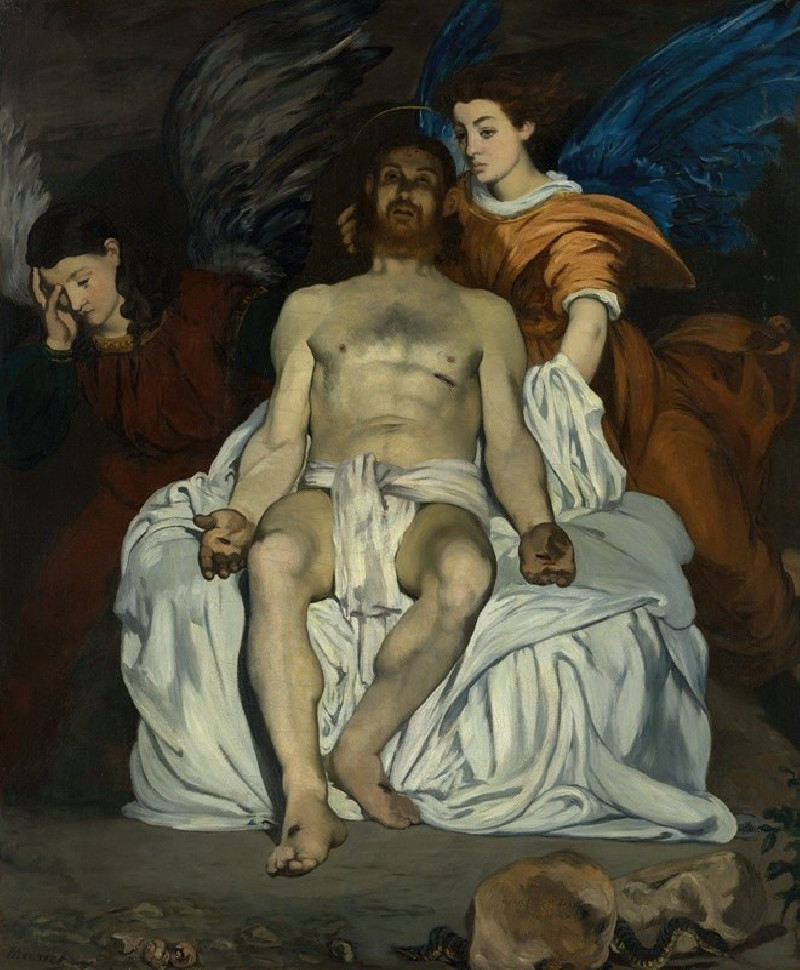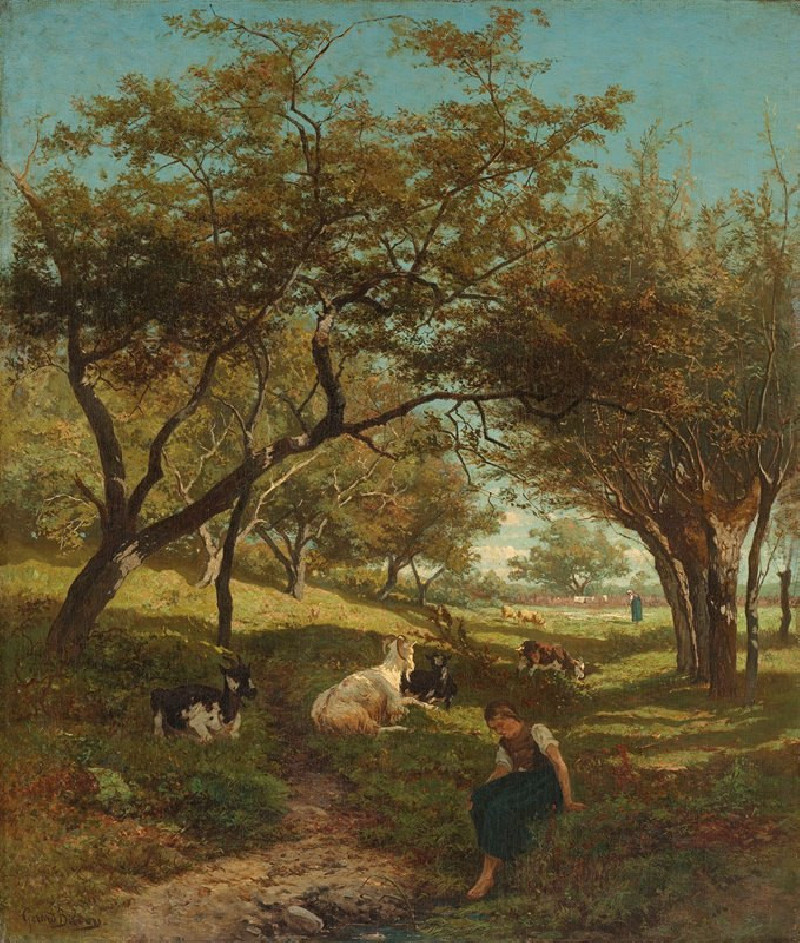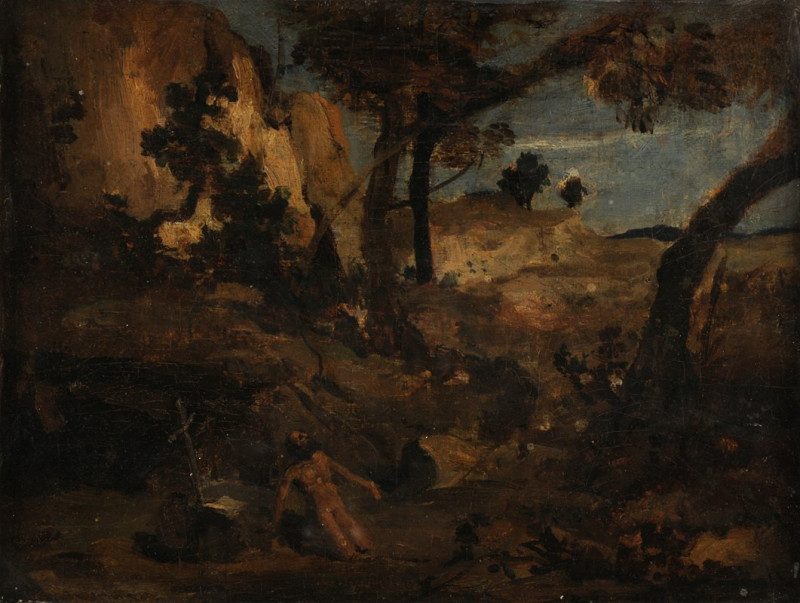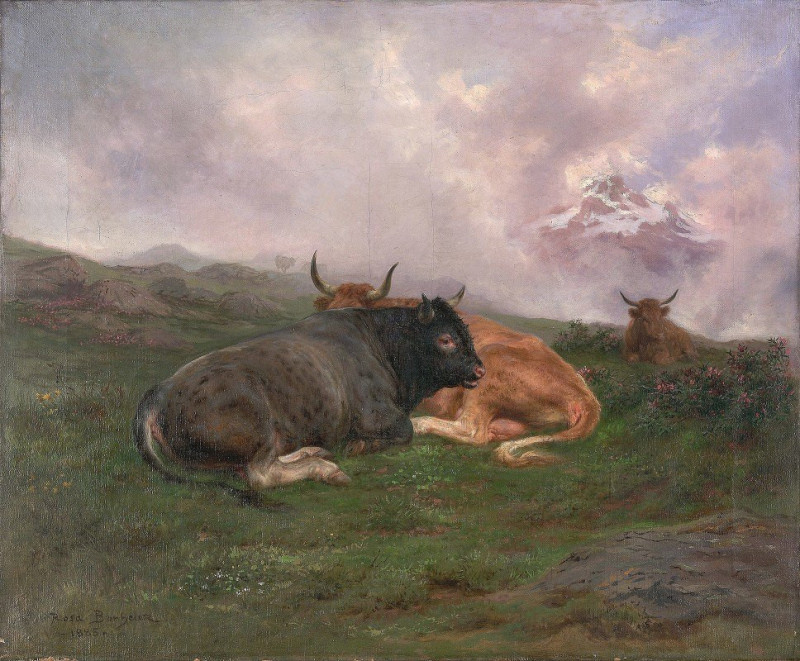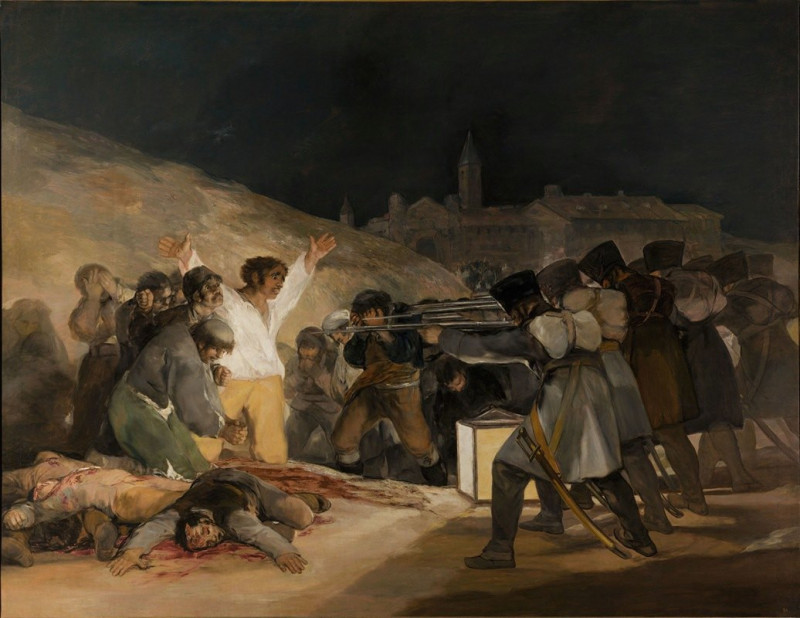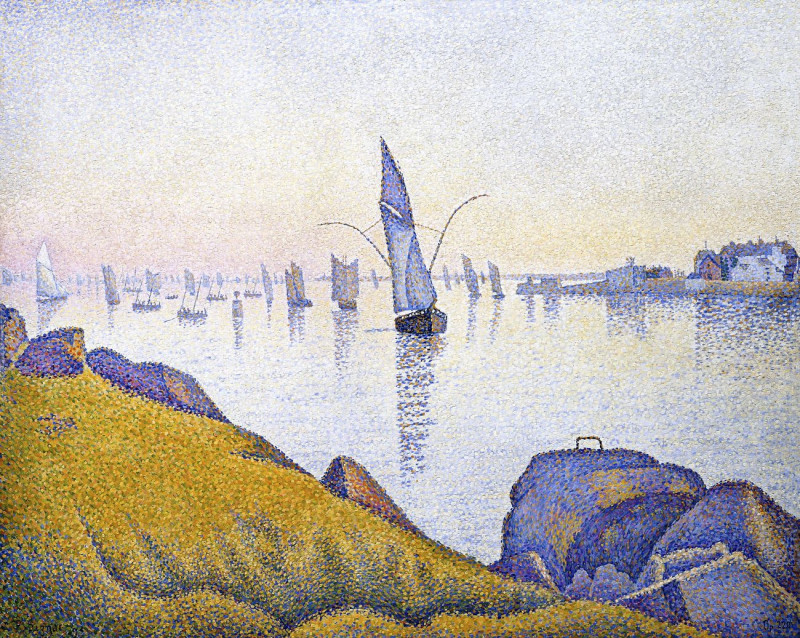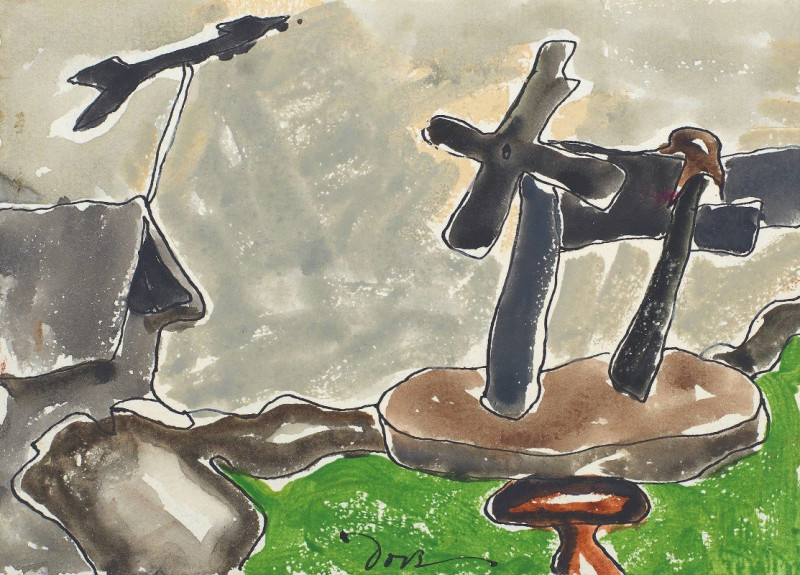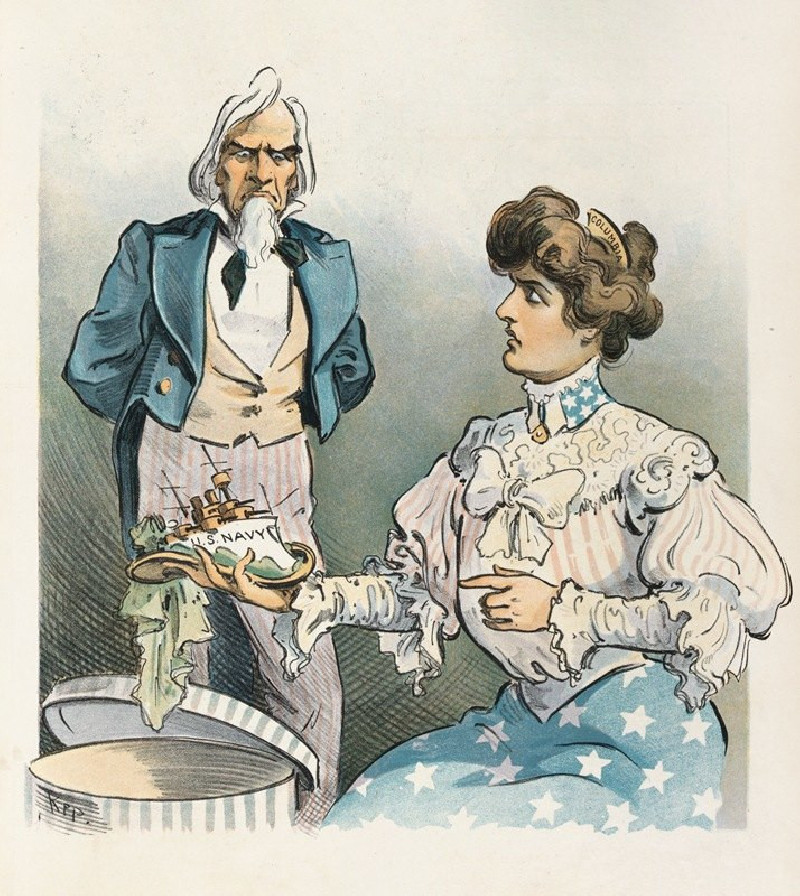The Dead Christ with Angels (1864)
Technique: Giclée quality print
Recommended by our customers
More about this artwork
Édouard Manet's remarkable painting, *The Dead Christ with Angels*, created in 1864, stands as a profound interpretation of the traditional Christian theme of the dead Christ supported by angels. This striking composition showcases Manet's mastery in capturing the raw emotions of biblical narratives through a modern lens.In the painting, Christ is depicted moments after the Crucifixion, seated on a stone, His body bearing the marks of His suffering. His pose is both noble and vulnerable, encapsulating the physical manifestations of His recent ordeal. Two angels flank Him, each portraying different reactions to the somber event. The angel to Christ's left appears sorrowful, her head bowed, embodying a deep sense of mourning. In contrast, the angel on the right, with vibrant blue wings, supports Christ, gently cradling his head, her expression one of compassionate resignation.The palette employed by Manet is subdued, with dark tones that emphasize the solemnity of the scene. The use of lighting highlights the physical details of Christ's figure and the ethereal glow around the angels, drawing a stark comparison between the mortality of man and the divine.This painting not only serves as a religious symbol but also reflects Manet’s interest in humanizing biblical scenes, bringing an intimate and immediate feel to traditional themes. The inclusion of detailed elements, like the crown of thorns and nails at the bottom of the composition, further grounds the celestial scene in the gritty reality of human suffering, bridging the spiritual with the tangible.
Delivery
Returns
Édouard Manet (1832–1883) was a French modernist painter and one of the first 19th century artists to paint modern life. His impressionist style is characterized by relatively small and thin brushstrokes that create emphasis on light depiction. Manet was one of the key artists in the transition from realism to impressionism, along with Claude Monet, Edgar Degas, and Pierre-Auguste Renoir. However, he resisted involvement in any one specific style of painting, and only presented his work to the Salon of Paris instead of impressionist exhibitions. His early masterworks, The Luncheon on the Grass and Olympia, created great controversy and served as a rallying point for other young painters.

